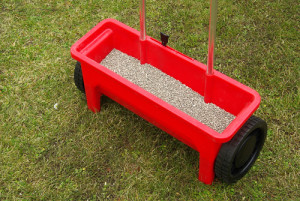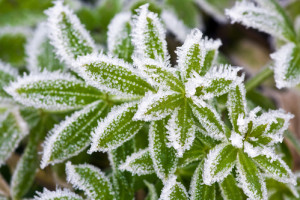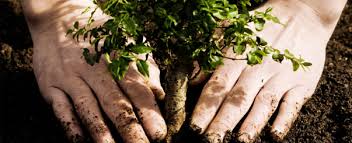Posts Tagged winter
Winter Landscaping – Its Actually Great For Your Lawn
During the latter time of the year, when the winter months begin to creep in, the outdoors transition into a dull and inhospitable place. All the activity then shifts to the indoors, however, for garden and lawn lovers alike, this is the ideal time to prep your lawns and gardens for the upcoming growing season. These are five easy tips you can consider, to keep your gardens and lawns in good shape during winter. Improve your winter landscaping techniques today!
Winter Landscaping Tips
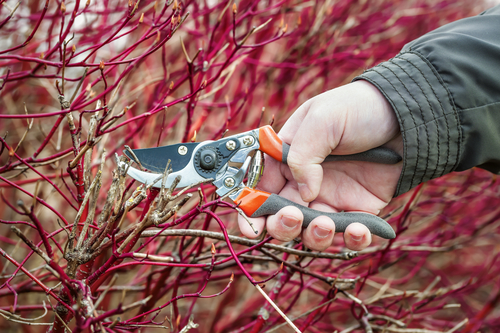
Pruning and trimming is a popular garden practice. This helps to shape, improve and maintain the general health of plants and trees. During the dormant, winter months carrying out these practices, tend to be fairly, popular and is encouraged,as during this time of dormancy, the vast majority of hedges, shrubs and trees, including evergreens and deciduous trees, can be pruned or trimmed, without causing damage to the plant or tree.
Heavy snowfall and high winds, usually come with the seasonal winter storms.Therefore it is recommended, that prior to this time, all high or decayed branches, be pruned or entirely removed. If or when stormy conditions occur, these decayed branches or dead trees can quickly transform into falling hazards, that pose serious threats of injury. With that said, not everyone may be confident enough to carry out pruning or trimming effectively. So we recommend, consulting a local, insured, tree removal service, who will handle all your trimming and pruning needs in a safe, professional and effective manner.
During the fall, leading into winter leaves are constantly falling, covering your garden or lawn from end to end with immense amounts of leaves. Cleaning and maintaining your lawns or gardens at this time, certainly proves to be a daunting task but is also very important. This practice allows your garden beds and lawns, to receive the adequate amounts of sunlight required, for the optimal growth of plants as well as lush healthy lawns.
Another resourceful and efficient tip one can utilize in effort to prep your garden for the upcoming growing season, is getting a head start planting your garden beds. One can begin by pruning all shrubs, trees and perennials.Secondly, clear and remove all leaves and other debris from beds. Afterward, define the edges of beds by hard edging and creating a perimeter pass along the edge, with a lawn mower. Once these steps are completed you can then begin to install your bulbs for spring.
Protecting plants from any damage or destruction, has always been a major concern for most gardeners,with the harsh,winter weather being no exception. A clever tip that has proven effective, to equip gardeners for this extreme period, is the use of mulch. Mulch is used to retain soil moisture, regulate soil temperature, suppress weed growth, serves as an aesthetic and most importantly, acts as a shield against the unfavourable, winter, conditions. Planting beds should be mulched at a depth of 1.5 – 2 inches, to ensure plant roots remain the right temperature as well as to offer the right amount of protection from any potential damage.
Ensuring that you maintain a safe and nurturing environment throughout your garden, should be a priority of every gardener, especially throughout the winter season. This would include tying up loose branches of evergreens and boxwoods,turning off and covering all water spigots, storing away any remaining, organic, chemicals and making sure that irrigation systems are properly winterized. With that said, please remember not to use a broom or shovel while removing snow from branches as they will be frozen, fragile and could easily sustain damage. If in doubt this winter season contact DK Landscaping for more information.
Lawn Fertilizer – Fall Vs Winterizer Fertilizer – What’s the Difference?
If you own property, you probably know that you should fertilize the lawn. However, some home and business owners are unaware that lawn fertilization should be performed more than once per year. Fall fertilizer is required as is winterizer fertilizer. The winter variety is specially designed to help your grass make it through the winter while the fall fertilizer serves its own unique purposes. Let’s take a closer look at the differences between the two.
Fertilizer Overview
It is important to note that just about all bags of fertilizer have three numbers on the front. Each represents one of the primary ingredients within the fertilizer. These ingredients stand for potassium (K), phosphorous (P) and nitrogen (N). In general, lawn fertilizer formulas typically have a formula of 29-3-4. This means that the fertilizer has 29 percent nitrogen, 3 percent phosphorous and 4 percent potassium. Both fall and winterizer fertilizer stimulate root growth. Yet each contains its own unique mix of potassium, phosporous and nitrogen.
Fall Fertilizer
Fall fertilizer is specially designed to stimulate the growth of new roots. It contains a delicate balance of potassium and phosphorous designed to spur growth. This special blend allows the grass to “dig in” and prepare for the rough winter weather. Additionally, fall fertilizer sets the stage for the lawn’s roots to make full use of the winterizer fertilizer that will be added later in the year. Fall fertilizer works best when applied to soil that has a temperature that has dropped to a 70 degrees Fahrenheit. Yet it will not be as effective if applied when the soil temperature dips below 55 degrees.
Winterizer Fertilizer
Many lawn care experts are adamant that winterizer fertilizer is the most important of all fertilizer applications. It helps the roots of the grass absorb and store nutrients as they continue to grow until the ground eventually freezes at some point in the winter. These nutrients are then readily available when temperatures increase in the spring season.
Winterizer fertilizer should be applied about four to five weeks after the application of the fall fertilizer. Ideally, this will occur at some point in October or November. By this point, the new (but empty) roots have formed and the ground is moving toward the freezing mark. It is specially designed with high levels of nitrogen to promote the accumulation and storage of carbohydrates before the soil freezes. This nitrogen is held in reserve throughout the winter, in anticipation of the spring growing season. Winterizer fertilizer also contains more potassium than regular fertilizer. The role of the added potassium is to boost the grass’s tolerance for the cold and bolster the root systems.
Winterizer fertilizer does more than just prepare the grass for the nasty winter ahead. It also functions to feed the grass throughout the winter to keep it healthy and a lovely green shade (yes, even throughout the winter). Apply winterizer fertilizer in the proper amount at the right time and it will help your grass look an even more gorgeously rich green when the spring season rolls around a few months later. Aside from increasing grass aesthetics in the winter and spring, winterizer fertilizer’s influx of nutrients also induces quicker “green-up” growth in the early days of spring.
Your Lawn Deserves Both Fall and Winterizer Fertilizer
Do your lawn an enormous favor by applying both fall and winterizer fertilizer at the appropriate times. If you have any questions or concerns about your grass, landscaping or other outdoor maintenance issues like irrigation, water conservation or general repairs, do not hesitate to reach out to us for assistance.
Practical Winter Gardening Advice For Homeowners
Are you looking to get the most out of your garden year-round? The good news is that a lot of common shrubs, plants and flowers do well against frost in more intolerant hardiness zones.
So, what is a hardiness zone and how does it affect your winter gardening? A hardiness zone is a map put out by the USDA that basically tells gardeners which plants work best in which climates.
General Winter Gardening Tips
What’s important to realize upfront is that plants that can withstand the frost usually enter a period of relative dormancy to survive the winter months.
So, what are some things that you can do to make this transition easier on your hardy plants and perennials?
- Remove Waste
Removing any refuse, blackened-out stems and leaves from annual flowers is a great way to lessen the possibility of pathogens in the soil harming your hardy plants during their dormancy period.
- Install a Cold Frame
A cold frame (more on this below) is a raised wooden structure with a plastic cover that can further help protect perennials and hardy bulbs against the elements.
Even when plants are considered perennial, they still might benefit from the protection that a cold frame offers – especially if the temperatures drop to below zero with the wind chill.
- Apply Winter Mulch
On the topic of mulching, you should also realize that a lot of your summer mulch may have already decomposed at the start of winter.
Laying down a fresh layer of winter mulch goes a long way towards protecting your hardy plants and underlying soil during winter.
http://gardening.about.com/od/winterinthegarden/a/WInter_Mulch.htm
You can actually work with the elements by turning the fall’s fallen leaves into a winter mulch that will stay frozen and protect your garden.
Winter Gardening Devices to Consider
In addition to paying attention to your hardiness zone, devices like a quick-hoop system, floating row cover, or cold frame can greater buffer those punishing winter winds and cold temperatures.
- Quick-hoop system
Quick-hoop systems are also called low tunnel systems, and by whatever name these structures have been known to protect your plants from winter’s frost.
Annual and perennial hardy plants are able to survive the rigors of winter, frost and heavy winds. This means that calendula, foxglove, pansies and peonies require little maintenance during winter beyond the protection from a low tunnel system.
Hardy plants like these require less light to develop fully and can withstand hard frosts. Hardier plants only require around four hours of sunshine every day and grow best in cooler conditions.
If you’re living in an area that gets less frost, then many of these plants can be grown throughout the winter months. It’s recommended, though, that you plant hardy plants when the soil temperature is around 40 degrees fahrenheit – perhaps in very late winter or very early spring.
Low tunnels provide more protection against cold temperatures, frigid winter winds, and more relative humidity than the surrounding environment.
http://www.motherearthnews.com/organic-gardening/low-tunnels-quick-hoops-zmaz09onzraw.aspx
- Floating Row Cover
Floating row covers are probably the most simple and straightforward form of winter protection.
Putting your hardy plants under a thin film can protect against cold, harsh winds and potential hail damage while allowing an extended growing season for hardy plants and perennials.
- Cold Frame
The most popular kind of cold frame is a portable cold frame encased in wood with a durable plastic cover to protect against the elements.
That said, there are three types of cold frames (pictured here) that can extend your growing season well past frost. For more winter gardening tips, contact the professionals at Xeriscape today.
Winter’s For The Birds
While your garden is dormant, it can be just as entertaining and rewarding to feed our feathered friends in winter. Feeding the birds in winter is a kindness not only to them, but also to yourself. After all, there’s nothing quite like watching all of the birds happily feeding each morning while you’re sipping on a hot cup of coffee.
Winter is a particularly a difficult season for birds who stick around colder climates, and is at that time of year when their usual foods are in short supply. Birds use a lot of energy in the winter months to keep themselves warm, they need extra stamina. Winter birds are around, but in order to entice them into our yards, we must provide a little nosh – a little seed, perhaps some suet.
Enrich the Birds’ Diet
Birds need extra fat and protein in the wintertime. Fatty treats like oil sunflower seeds, peanuts, and suet are a tasty way to provide these nutrients. (Change the menu in favor of lighter fare when the spring thaw comes along.)
Hang a Covered Bird Feeder
Use a bird feeder equipped with a roof, to shelter your guests from all but the harshest weather that Mother Nature has in store. Fill it up regularly and remember to remove any seeds that get moldy from wintry damp.
Hang Feeders in Cat-Safe Locations
Place bird feeders in locations that do not also offer hiding places for sneak-attacks by cats and other predators. Think of placing the feeders ten to twelve feet from shrubs or brush piles. This gives the birds some time to react.
Offer Birds both Food and Drink
Birds can become dehydrated in winter even if surrounded by ice and snow. Putting out a pan of water near the feeder on warmer days is a terrific idea.
Save Money and Stock Up on Seed
Bird feeding veterans say it is best to stock up on birdseed in the Fall when many lawn and garden centers are discounting it to make way for winter merchandise. Stored properly, (in cool dry places) seed can easily last for months, particularly seed mixes and sunflower seeds.
Leaving berriesand other fruit on your native trees and bushes. Birds ranging from robins, cardinals, juncos, waxwings and mockingbirds to wild turkey and grouse will feast on these fruits throughout the cold months. And if you’ve been smart enough to leave your fallen leaves on the ground since autumn, the decaying leaf litter will provide a feast of insects, seeds, nuts and other treats for your backyard birds.
Surviving Winter Drought
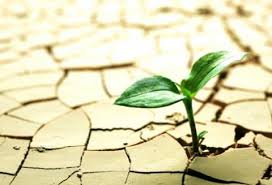
Since our “official” rainy season began October 2013, Sonoma County county has seen only two inches of rain bringing us the driest season that anyone can remember in the North Bay. This has resulted in another difficult growing season for farmers and gardeners. Many cities are already implementing water restrictions and encouraging citizens to voluntarily engage in water conservation.
So what can the home gardener do to use less water, enjoy the garden more, and help the environment? Here are DK Landscapings 10 easy tips:
1) Check for Leaks and Repair– Leaks can occur for many reasons and in many parts of watering systems. Review sites weekly for “weeping” valves, sprinklers, hose bibs, etc.
2) Choose Hand Watering – over automatic irrigation when possible. The more time you spend with the plants, the more they benefit from the attention, the sooner they establish, and the less water they need.
3) Avoid Runoff – To gauge the time to run off, turn on a sprinkler zone and track the time until water runoff begins. That is the amount of run time that should be entered into the controller followed by at least 30 minutes before the next cycle.
4) Inspect and Tune-Up your Sprinkler System Monthly – Adjust your sprinkler heads to prevent water draining off your lawn and down the gutter. Reduce sprinkler run-time, and don’t be a gutter flooder.
5) Get to Know Your Meter – Your water meter is an important conservation tool. It not only measures the amount of water you use, but can also tell you if there is a leak in your plumbing.
6) Incorporate Shrubs and Trees into the garden. Once established, these deep-rooted plants require far less water than shallow-rooted perennials and annuals.
7) Learn Soil/Plant Relationships – Landscape plantings need healthy soil to grow and thrive. The more healthy a plant is, the more stress it can tolerate. Knowing soil type will help with irrigation scheduling. Being able to identify plants will indicate how to best care for the landscape as a whole. In times of drought, reducing fertilizing and pruning can help plants survive with a reduced amount of water.
8) Water – between midnight and 6:00 a.m. to reduce water loss from evaporation and wind. Water your lawn and garden in 2 or 3 short cycles rather than one long one. Watering to a depth of 4″ to 6” will encourage deeper healthier roots and allow the plants to go without water for longer periods of time.
9) Reduce the size of water features (like a pond, stream, or water fountain) to conserve water while still attracting birds and wildlife.
10) Use a Broom, not a hose, to clean your driveway, deck, or patio. Washing a sidewalk or driveway with a hose uses about 50 gallons of water every 5 minutes.
DK Landscaping specializes in water conversation, water efficiency and water management and makes it a priority when serving our clients and our community every season of the year. It is a primary consideration in everything we do, from the selection of plants to the design of irrigation systems and the equipment choices we make.
Every drop matters, and each one of us counts.
Winter Trees
When comparing winter to the lush of spring, summer and fall colors, landscape in the winter can seem subdued. But don’t be too quick to dismiss the garden in the off season. Evergreens are a great and obvious choice to add to your landscape, but what about winter trees? Winter trees offer interesting bark, brightly colored berries, and interesting form and are filled with beautiful secrets of seasons past, as well as seasons to come.
Winter trees can add structure to the landscape and garden and some make excellent hedges and screens whilst others are ideal as statement specimens. From flowering cherries and crab apples to evergreen yews and weeping willows trees offer different leaf size, shape and color. Many have attractive flowers, fruits and seeds and there are those that flower magnificently in spring and those whose leaves offer brilliant autumn color just before leaf fall.
Here are DK Landscaping’s top ten list of trees we recommend planting in the winter.
1. Himalyan Birch (Betula utilis var. jacquemontii)
2. Silver Birch (Betula pendula)
3. Snowy Mespilus (Amerlanchier lamarckii)
4. Christmas berry ‘Red Robin’ (Photinia fraserii ‘Red Robin’)
5. Freeman’s Maple (Acer freemanii ‘Autumn Blaze’)
6. English oak (Quercus robur)
7. Pin oak (Quercus palustris)
8. Crab apple (Malus ‘Evereste’)
9. Crab apple (Malus ‘Rudolph’)
10. Vilmorin’s mountain ash (Sorbus vilmorinii)
By planting trees you can reduce or improve your carbon footprint and generally enhance the environment. Trees can transform an area by introducing welcome shade, protective shelter and wildlife and are an investment for future generations.
All trees require some support and protection such as stakes, tree ties and tree guards. Fertilizer can be added to the planting hole and mulch can be added after planting to preserve moisture and keep down weeds.
Newly planted trees do best when exposed to moderate temperatures and rainfall and they need time to root and acclimatize before the onset of summer heat or the harsher temperatures of winter. Container grown trees can be planted at any time of the year providing the soil / ground is not frozen or water logged.
Fall Lawn Care Tips
Many people have this false belief that as fall and winter approach, they need to spend less time on their lawn because grass grows more slowly in these months. The truth is, this is the time of year grass is busily absorbing energy, moisture, and nutrients in preparation for a long, dormant winter. Give your lawn the attention it deserves now, and you’ll be rewarded with a lush, healthy lawn in the springtime. DK Landscaping provides you with these simple tips:
1. Aerate: Aeration is important because it gives your lawn a chance to breath in autumn and provides room for new grass to spread. Aeration pulls up plugs of grass which help to loosen compacted soil. This improves water, nutrient and oxygen infiltration to reach your grass roots and gives seeds room to sprout.
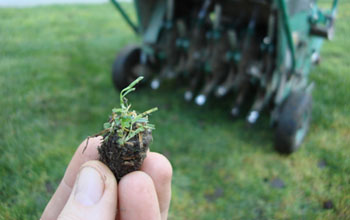
2. Fertilize: Fertilizing in the fall, before the first frost, helps your grass survive a harsh winter. It provides nutrients to reach roots for your grass to grow a stronger root system over the winter. This will result in a healthier and stronger lawn next spring. We recommend choosing a product high (10% to 15%) in phosphorous, which is critical for root growth.
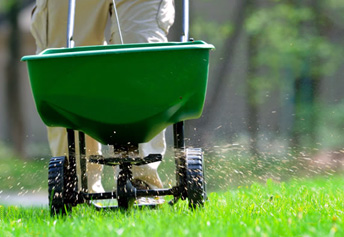
3. Weed Control: If broadleaf weeds like dandelions have taken over your lawn, now’s the time to fight back. Weeds are germinating like crazy in the fall, so make sure you apply a pre-emergent as soon as possible. The best time to apply a pre-emergent to combat winter weeds is in August or September.
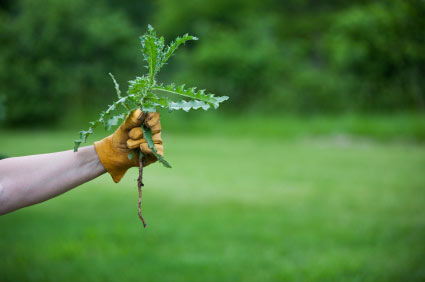
4. Rake: While those leaves can look pretty on the lawn, the leaves decay which negatively affects the grass. When there is a blanket of leaves on the lawn, sunlight cannot get through to the grass. Rake up the leaves at least once a week.
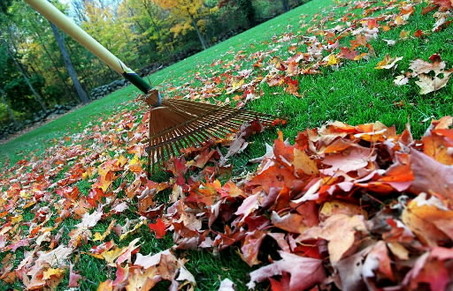
5. Mowing: Mowing your law is the single most important thing you can do to manage the vigor of your grass and its ability to compete against weeds. In the fall, the best results are obtained by mowing at the highest setting on your mower. In no case should the mowing leave the grass less than 1.5 inches (3.75 cm) tall. This will help insulate the grass during the winter.

Lastly, if you are not certain how to proceed or do not want to deal with the hassle, contact a professional lawn company in Sonoma County that provides year-round lawn care.
Protecting Your Landscape From Frost Bite
The temperatures in Northern California are beginning to drop which means winter will be before us, before we know it. Night time temperatures that get down to freezing and below will damage some trees and plants if you don’t take precautions against frost. These low temperatures can begin late November and continue through February and beyond.
DK Landscaping helps you prepare your landscape and provides tips to protect your delicate plants from frost bite.
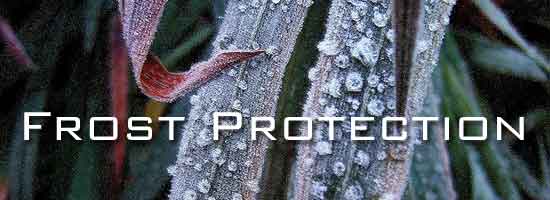
WINTERIZE
Fall is prime time to clean up your landscaping and remove the dead landscaping before it gets too cold. Removing dead plants can also stop the growth and spread of fungi that could infect your plants’ new growth in the spring.
PLANT
Planting trees and shrubs in the fall is a an optimal time before the first frost arrives and best time to take advantage on some great end of the season deals. Planting in the fall gives roots plenty of time to become established before the next growing season begins. Not only will you get to enjoy the changing leaves for a brief time, you will also put less stress on your young trees because of the cooler weather and rain conditions fall offers.
MULCH
Mulching can be a great first step in preparing for winter’s frost. If you are unfamiliar with mulching, check out our previous blog post called Mulch About Fall. There are many benefits to mulching your lawn and plants, especially before winter. Mulching in the fall can help protect your plant’s roots as well as help them retain moisture during the cold, dry winter.
Just a few preparations for winter can guarantee that your landscaping will come back fresher than ever in the spring.
For more information on the care of your landscape, please contact David or Kathy Lee from DK Landscaping (707) 280-3632.
Mulch About Fall

Did you know that mulching in the fall is just as important as it is in the spring and summer months? We mulch in the spring and summer months to suppress weeds, retain moisture and feed and warm the soil. However, when the temperatures begin to drop and the ground freezes, root systems can be exposed. The primary reason for winter mulching is to protect our plants from the harsh conditions of winter freezes, thaws and winds. Mulch acts as an insulator to balance the temperature creating a warm, heavy blanket of protection.
Neglecting to mulch in the fall can be damaging to your plants in the spring season. And the cost of mulching is nothing compared to the cost of replacing some of your favorite trees and shrubs. It also adds a beautiful aesthetic to your landscape in the winter months.
Using fall leaves as organic mulch is a great benefit to your landscape. They will break down over the course of the wintertime and create a layer of nutrients for your plants to draw from. Adding a layer of leaves over your perennials will help regulate soil temperature of the wintertime, as well as give new shoots a protective blanket as they enter the world in the spring.
DK Landscaping offers mulching installation in Sonoma County. Contact us for more information on the benefits of fall mulching (707) 280-3632.


